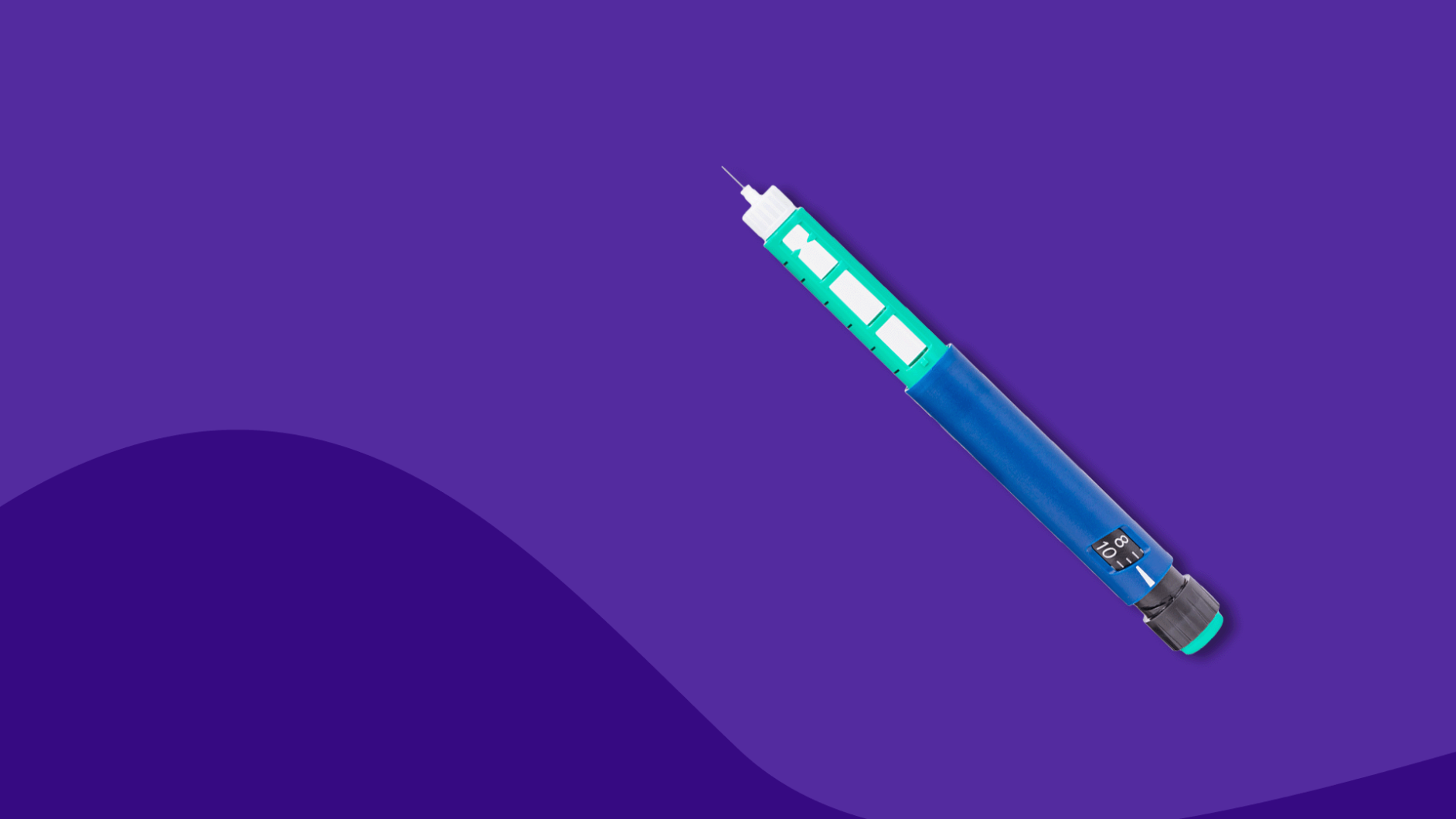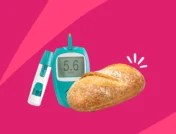What is Ozempic | Side effects | Cost | Best injection site | How to use an Ozempic pen | Storage | Disposal | How to save
If you are a new patient who has been prescribed Ozempic (semaglutide) injection, it can feel overwhelming to not only cope with a new diagnosis but also learn how to inject yourself. The good news is that Ozempic injections are easy to use, and once you inject yourself a few times, it will feel effortless.
What is Ozempic?
Ozempic is an injectable prescription medicine that contains the active ingredient semaglutide. Ozempic is approved by the U.S. Food and Drug Administration (FDA) to improve blood sugar control in adults with Type 2 diabetes mellitus. It should be used along with a healthy diet and exercise. Ozempic can also be used to lower the potential risk of major cardiovascular events (such as heart attack and stroke) in adults with Type 2 diabetes who have heart disease. Healthcare professionals often prescribe Ozempic off-label—meaning that a drug is prescribed for an indication not FDA-approved—for weight loss in people with or without diabetes.
Ozempic is not approved for use in people with Type 1 diabetes.
Ozempic is classified as a glucagon-like peptide 1 (GLP-1) receptor agonist. Although it is injected, it is not the same as insulin. It’s also different from other popular antidiabetic medications, such as metformin. Ozempic works in three ways:
- It increases insulin secretion (which helps lower blood sugar levels)
- It decreases glucagon secretion (glucagon increases blood sugar, so by reducing glucagon, Ozempic helps control blood sugar levels)
- It slows stomach emptying, which can lead to appetite and weight loss
What are the most common side effects of Ozempic?
The most common possible side effects of Ozempic are gastrointestinal and may include nausea, vomiting, diarrhea or constipation, stomach pain, burping, indigestion, reflux, and gas. Other common side effects may include diabetic retinopathy, low blood sugar, and injection site reactions.
Rare but serious side effects may include kidney problems or kidney failure, gallstones, and inflammation of the pancreas or gallbladder. Serious allergic reactions are rare. Symptoms of a serious allergic reaction, such as hives, difficulty breathing, or swelling of the face, lips, tongue, or throat, require emergency medical help.
Ozempic has a black box warning, the most serious warning required by the FDA. The warning states that Ozempic and similar medications have caused thyroid C-cell tumors in animal studies. However, it is unknown if Ozempic will cause thyroid cancers in people. People who take Ozempic should immediately notify their healthcare provider if they have symptoms of thyroid cancer, including a lump or swelling in the neck, a hoarse voice, difficulty swallowing, or shortness of breath. Patients with a history or family history of medullary thyroid cancer should not take Ozempic or any GLP-1 receptor agonist. Also, people with Multiple Endocrine Neoplasia syndrome type 2 should not take Ozempic or any GLP-1 receptor agonist.
What is the cost of Ozempic?
If you have insurance or a Medicare prescription plan, the cost of Ozempic will depend on your plan. You can contact your plan for up-to-date pricing information. People who pay out of pocket, without insurance, may pay over $1,000 for a one-month supply of Ozempic. Using a free SingleCare card can significantly reduce the price, and you can use the card on refills and other prescription drugs.
Where is the best injection site for Ozempic?
Whether you are using Ozempic for blood sugar control or obesity, the injection sites are the same.
Ozempic is administered as a subcutaneous injection (under the skin) of the abdomen, thigh, or back of the upper arm. There is not one “best” area to inject Ozempic, as clinical trials showed that all of these sites resulted in similar medication absorption.
Ozempic should never be injected into a muscle or vein.
Rotating injection sites each week is important—meaning that you should inject your weekly dose in a different area than the previous dose.
Your healthcare provider will start you at a low dosage of 0.25 mg once weekly for four weeks. This dosage is intended to initiate treatment with Ozempic and does not help control blood sugar.
After four weeks, your healthcare provider will have you increase to a dose of 0.5 mg once weekly. After four more weeks, your healthcare provider may advise you to stay on this dosage or increase it to 1 mg weekly if additional blood sugar control is needed. After at least four weeks on the 1 mg dosage, if needed, the healthcare provider may increase the dose to a maximum dosage of 2 mg once weekly.
Follow your provider’s instructions for use carefully, and always ask if you are unsure of the dose.
How to use an Ozempic pen
Ozempic should be injected once every week—on the same day each week—at any time of day. It does not matter if you inject Ozempic in the morning or evening. Ozempic can be administered with or without food—you do not have to eat before your injection. If you need to change your weekly injection day, you can do so if you separate the two doses by at least 48 hours or two full days.
If you miss a dose of Ozempic, inject it as soon as you remember—if it is within five days of the missed dose. If it has been more than five days, you can skip the missed dose and resume with your next dose on the regularly scheduled day. If you miss a dose and you are unsure what to do, ask your healthcare professional for medical advice.
Do not use Ozempic until you have been trained by your healthcare provider. Be sure you understand how to inject yourself before injecting Ozempic at home. Carefully read your prescription label and information leaflets. Ask your healthcare provider if you have any questions or concerns before using Ozempic.
If you require assistance with eyesight, do not use Ozempic without help. Have a family member or caregiver with good vision get trained on using Ozempic so they can help you.
Prepare the injection
Follow these steps to prepare the injection:
- Wash your hands with soap and water.
- Gather your supplies and your Ozempic pen, including a new disposable needle, an alcohol swab, a gauze pad or cotton ball, and a sharps container.
- Check your pen to make sure that it is the correct medication. This is especially important if you use more than one type of injection or if you have others in the house who take injectable medication(s).
- Remove the pen cap.
- Check that the medication in the pen is clear and colorless. If it is cloudy or contains particles, do not use the pen. Consult your pharmacist.
- Get a new needle and remove the paper tab. Always use a new needle for each injection. Never reuse needles, and never share needles with others. Sharing needles with others can result in a serious infection. If the needle is bent or damaged, do not use it.
- Push the needle straight onto the pen, then turn it until it is tightly attached.
- Pull off the outer needle cap. Do not discard it.
- Pull off the inner needle cap and discard it. You may see a drop of medication at the tip of the needle.
Check the flow of Ozempic
Before the first use of a new Ozempic pen, you will need to check the flow of medicine. You must only check the flow before the first injection with a new pen. If the pen has already been used, skip to the next step, “Select your dose.”
- Turn the dose selector until the dose counter shows the flow check symbol.
- Hold the pen with the needle pointing up, with your thumb on the bottom and the pen between your fingers.
- Press and hold the dose button until the dose counter shows zero. The number zero must line up with the dose pointer. A drop of medicine will appear at the tip of the needle. If you do not see a drop, repeat this step up to 6 times. If there is still no drop, get a new needle and repeat this step again. If a drop of medicine still does not appear, do not use the pen. Contact the manufacturer, Novo Nordisk, at 1-888-693-6742.
Select your dose
To dial the pen to the proper dosage:
- Turn the dose selector to the appropriate dosage.
- Although you will hear a click when you turn the dose selector, do not count the clicks. The dose will line up with the dose pointer.
Inject your dose
It is now time to inject a dose of Ozempic. To do so, follow the steps below:
- Choose an injection site (abdomen, thigh, or back of the upper arm), remembering to select a different site than the previous site. Wipe the skin with an alcohol swab, and let it dry.
- Insert the needle into your skin, ensuring you can see the dose counter. Do not cover the dose counter with your fingers. Touching the dose counter may stop the injection.
- Press and hold down on the dose button until the dose counter shows zero. The zero will line up with the dose pointer. You may hear and feel a click.
- Keep the needle in your skin and slowly count to 6 before removing the needle. Removing the needle too soon could prevent the full dose from being administered.
- After counting to 6, remove the needle from your skin. A drop of medicine may appear at the needle tip after injecting—this is normal.
- If any blood appears on the skin, press lightly with a gauze pad or cotton ball.
- If zero does not appear on the dose counter after holding the dose button, your needle may be blocked or damaged. In this case, no medicine has been delivered, and you should change the needle and start over.
After the injection
Follow these steps after injecting Ozempic:
- After injecting Ozempic, carefully remove the needle from the pen. Do not put the needle cap back on the needle which could cause a needle to stick.
- Place the needle in a sharps container right away. Never reuse the needle.
- Put the pen cap back on the pen after each use. This protects the medicine from light.
- Always remove the needle and replace the pen cap before you store Ozempic.
Storage
Before using an Ozempic pen, store it in the refrigerator at 36ºF to 46ºF. Do not store in the freezer or next to the refrigerator’s cooling element. Do not freeze Ozempic or use Ozempic if it has been frozen.
After using Ozempic, you can store the pen for up to 56 days at room temperature (59°F to 86°F) or in a refrigerator. If you store Ozempic at room temperature, keep it away from excessive heat and sunlight. Keep Ozempic out of sight and out of reach of children.
How do I know when my Ozempic pen is empty?
It is helpful to know the number of doses of Ozempic in your pen.
- The 0.25/0.5 mg pen, 3 mL size, contains four doses of 0.25 mg and two doses of 0.5 mg— or four doses of 0.5 mg
- The 0.25/0.5 mg pen, 1.5 mL size, contains four doses of 0.25 mg and two doses of 0.5 mg—or four doses of 0.5 mg
- The 1 mg pen contains four doses of 1 mg
- The 2 mg pen contains four doses of 2 mg
To see how much Ozempic is left in the pen, use the dose counter. Turn the dose counter to the desired dose. If there is not enough medicine left in the pen, you will not be able to dial up the appropriate dose. Use a new pen if there is insufficient medicine for a full dose.
How to dispose of an Ozempic pen
- If your pen is empty or does not contain enough medicine for a dose, it is time to dispose of it. The Ozempic pen and needle should be placed in a sharps disposal container immediately after use. If you have Ozempic pens that are past the expiration date or no longer needed, you can also put them in your sharps container.
- If you do not have a sharps container, you can use a household container that is made of heavy-duty plastic, can be closed with a tight-fitting, puncture-resistant lid, is leak-resistant, and can be stored upright. Label the container to warn of hazardous waste.
- When your sharps disposal container is almost full, follow your community guidelines on how to dispose of the sharps container. You can find more information on the FDA website.
How to save on Ozempic pens
Although Ozempic can be costly, there are ways to pay less for your prescription:
- People with commercial or private insurance may pay as little as $25 for a one-month, two-month, or three-month supply of Ozempic for up to 24 months. Check the website for eligibility requirements and other details.
- The Novo Nordisk Patient Assistance Program provides no-cost medication to those who qualify. You can check the website to see if you qualify.
- You can use a free SingleCare discount card to save on the cost of your prescription, as well as refills. What’s more, you can use the SingleCare card to save on the cost of all your medications. Ask your pharmacist to compare your price with insurance to the price with a SingleCare card.
If you are unable to find a way to pay an affordable amount for your Ozempic prescription, you can talk to your doctor about Ozempic alternatives that may be more affordable.











